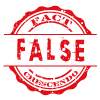
Allah
‘In the name of Allah, the Most Gracious, the Most Merciful’. This is how the Holy Qur’an begins. Nearly the whole world knows by now that ‘Allah’ is what we call ‘God’ in Islam. But where does it originate? In Arabic, it is the personal name of the One True God who is ‘Supremely Divine’. It is not a combination of ‘Al-’ (‘the’) and ‘Lah’ (there’s no such word in the Arabic language). The ‘Al-’ is an inseparable part of the word. There are words that may look similar like ‘ilah’ (‘god’) and ‘ilaha’ (‘gods’) in Arabic or the root ‘el’ (‘god’) in other Semitic languages, yet the name ‘Allah’ is truly unique and without any real parallel; unlike the other words on this list, it is a singular form with no plural: it can logically only refer to One Being and no other. The first book to use the word ‘Allah’ is, of course, the Holy Qur’an (the first and oldest book in the Arabic language). ‘Allah’ is very precisely defined throughout the Holy Qur’an via approximately one hundred divine attributes that appear in the majority of verses. Naturally, the word is therefore most commonly associated with Islam. However, it is also used by Arabic-speaking Jews and Christians to refer to the One True God of Abrahamic Monotheism.
Elohim
Arabic is closely related to Hebrew, which is the holy language of Judaism, used in the Tanakh, the holy book of the Jewish people. Among many other words that they have in common, Arabic and Hebrew have similar words for ‘divine beings’; in Arabic, there is the word ‘ilaha’ (‘gods’/’things worthy of worship’) whereas in Hebrew, the word for ‘God’ is ‘Elohim’. This word appears in the very first verse of the Tanakh: ‘In the beginning, God created the heavens and the earth’. However, ‘Elohim’ is not the most important word for God in the Tanakh. That distinction would have to go to the tetragrammaton — a divine name written in English most commonly as ‘Yahweh’. Many Jewish people believe that it’s blasphemous to say ‘Yahweh’ out loud, so they instead say ‘Adonai’ (‘my Lord’) when reciting the Tanakh.
Theos
The Tanakh is also called the ‘Hebrew Bible’ because it is the same as the Old Testament of the Bible in Christianity. You may have noticed that ‘In the beginning God created…’ is also how the Old Testament of the Christian Bible begins. The New Testament, on the other hand, is written in a late form of Ancient Greek, called Koine Greek. The word for ‘God’ in Greek is ‘Theos’ where we get the English word ‘theology’ (‘the study of God’). It appears at the beginning of the first Gospel: ‘In the beginning was the Word and the Word was with God and the Word was God’. Although ‘Theos’ is important for some Christians (e.g. Greek Orthodox), it is not very emotionally important to most Christians because most sects do not use the ‘Theos’ when praying. Moreover, most Christians only study the Bible in their own languages; they do not tend to read the translation alongside the original version, as Muslims do with the Qur’an in Arabic, as Jews do with the Tanakh in Hebrew, or as Hindus do with the Vedas in Sanskrit.
Bhagwan
The Vedas are the oldest scriptures in Hinduism, so old in fact that the language in which they are written is referred to as Vedic Sanskrit in order to distinguish it from later forms of Sanskrit. Other categories of scripture include the Puranas and Ittihasas. The amount of Hindu literature is staggeringly vast; tens of thousands of pages and many volumes. Contrary to other religions, there is no one single holy book in Hinduism. There are many different sects and traditions in Hinduism and many different gods and goddesses are worshipped. But even in Hinduism, there is one word that cuts across all these different boundaries: ‘Bhagwan’. This word refers to One Universal God rather than a particular local deity. The word ‘Bhagwan’ can also be found in Jainism and Buddhism and occasionally also in Sikhism. Although Sikhs are strict monotheists, they prefer the term ‘Waheguru’ (a combination of ‘wah’ meaning ‘wow/wondrous’ and ‘guru’ meaning ‘Teacher/Sage/Lord’) instead of ‘Bhagwan’.
Deus
Just as the word ‘Bhagwan’ is common across many different languages and localities in India, Christianity also had a word for God that was widely used in many different parts of Europe. The largest sect of Christianity today is Catholicism and Latin is still its holy language although it’s less important now than it was previously. The word for ‘God’ in Latin is ‘Deus’, which is used throughout the Latin Vulgate Bible — the only version of the Bible allowed in most of Europe for over a thousand years. ‘Deus’ is also where we get the English word ‘deity’ from. It is also the source of the French ‘Dieu’, Spanish ‘Dios’ and Italian ‘Dio’. Portuguese ‘Deus’ is still the same. Latin was once the common language of Europe and the only language in which they believed that prayers would be accepted by God. So ‘Deus’ was an emotionally important word for many European Christians throughout history — in fact, for the majority of the world’s Christians at one point.
God
Although Catholicism is still Christianity’s largest sect, it lost its dominant position in Northern Europe many centuries ago; England, Germany, Denmark, Sweden, Norway etc. were all once Catholic countries but have been Protestant nations for a very long time now, ever since the time of the Protestant Reformation in the 1500s. One of the important changes brought to these countries by the Protestant reformation was that people began to read the Bible in their own languages for the first time. In England, this meant that the English word ‘God’ began to be used in the Bible for the first time. Similar words were used in Protestant countries whose language were related to English e.g. German ‘Gott’, Swedish ‘Gud’, identical Dutch ‘God’ etc.
Khuda
Not many people know that Persian (the national language of Iran, also known as ‘Farsi’) is related to English. They are both Indo-European languages and have a surprising number of words in common e.g. ‘mother’ and ‘madar’, ‘daughter’ and ‘dokhtar’, ‘brother’ and ‘baradar’, ‘thunder’ and ‘tondar’, ‘door’ and ‘dar’, ‘mine’ and ‘man’, ‘name’ and ‘naam’, ‘I am’ and ‘am’, ‘is’ and ‘ast’ (the English ‘is’ was originally ‘ist’ like in German) etc.
Ironically, there are two Persian words which look similar to English words (one is actually identical) but turn out to be unrelated. Interestingly, they’re a pair of almost opposite words: the Persian word ‘bad’ (meaning ‘bad’) and ‘Khuda’ (meaning ‘God’). Oddly enough, it also turns out that the English word ‘God’ is unrelated to ‘good’, which comes from a different root.
The word ‘Khuda’ comes from Old Persian ‘Xwaday’ and was originally used to refer to Ahura Mazda, who is the God of Creation in Zoroastrianism, the ancient faith of Persia. It is still practised today by a small number in Iran and more in places like India, where the community is known as the ‘Parsees’. Zoroastrians believe that Ahura Mazda is the Good God who has to fight an eternal battle against an equally powerful god of evil.
These days the word ‘Khuda’ is primarily used in Persian and Urdu (which borrowed it from Persian) by Muslims to refer to Allah.
Allah (again)
I am mentioning ‘Allah’ again because it is truly unique and special among the names mentioned so far. ‘Allah’ is the only one of these names that (1) refers to a being that is the Supreme Being in charge of the Universe and (2) has only ever been used to refer to this One Being alone to the exclusion of all other entities and (3) cannot possibly ever be used logically to refer to anything else because it is a singular form with no possible plural according to the rules of Arabic grammar and can only be a personal name for One Being.
This might be hard to understand, so it might be useful to make a quick comparison with the name of God in other religions. For example, the Hebrew word ‘Elohim’ is actually the plural of ‘eloh’ (‘god’); it technically refers to many gods. Since Jewish people only believe in One God they explain this by saying it’s a royal plural (like how Allah often refers to Himself as ‘We’ in the Holy Qur’an). But the fact still remains that ‘Elohim’ can refer to many gods and is the plural of a word that was used to refer to local gods in ancient polytheism. ‘Allah’, on the other hand, can only refer to One God and never meant anything else; even when the Arabs were pagans and idol-worshippers, they still believed in a Supreme Creator of the Universe and called Him ‘Allah’, a word only reserved for Him alone.
Likewise, the Greek word ‘theos’ could be used to refer to any of the ‘theoi’ (‘gods’) of Ancient Greek paganism such as Zeus, Ares, Poseidon or Hades (the plural is ‘theoi’); the same is true for Latin ‘deus’ which once referred to the many ‘dei’ (‘gods’) of Roman paganism e.g. Jupiter or Mars. In the same way, the Sanskrit word ‘Bhagwan’ can be used to refer to any local god or deity and does have a plural form. ‘Khuda’ originally just meant any human ‘lord’ or ‘master’; ‘Waheguru’ comes from ‘guru’ which has always referred to human beings and still does. The English word ‘god’ can refer to almost anything; it even has to be capitalised in writing so we know Who we’re talking about. Even the special name of God in Judaism (‘Yahweh’) was originally the specific name of the ancient Israelite god of storms and war i.e. ‘Yahweh’ did not originally refer to the Supreme Being and only later rose to prominence among the Israelites.
This is why the name ‘Allah’ is so remarkably unique: it’s the only one that stands out as being a name not derived from any other word, never referring to anything else, not possibly able to refer to anything else, only ever referring to the Supreme Being Who created the Universe.
We’ve now finished coming back full circle to ‘Allah’. Incidentally, circles are a symbol of the Oneness of God in many religions because they have only one side and no beginning or end. But that’s a topic for another article.
وَمِنۡ اٰیٰتِہٖ خَلۡقُ السَّمٰوٰتِ وَالۡاَرۡضِ وَاخۡتِلَافُ اَلۡسِنَتِکُمۡ وَاَلۡوَانِکُمۡ ؕ اِنَّ فِیۡ ذٰلِکَ لَاٰیٰتٍ لِّلۡعٰلِمِیۡنَ
‘And among His Signs is the creation of the heavens and the earth, and the diversity of your tongues and colours. In that surely are Signs for those who possess knowledge.’ [1]
About the Author: Mansoor Dahri is an online editor for The Review of Religions. He graduated from UCL in BA Ancient Languages.
ENDNOTES:
[1] The Holy Quran 30:23











